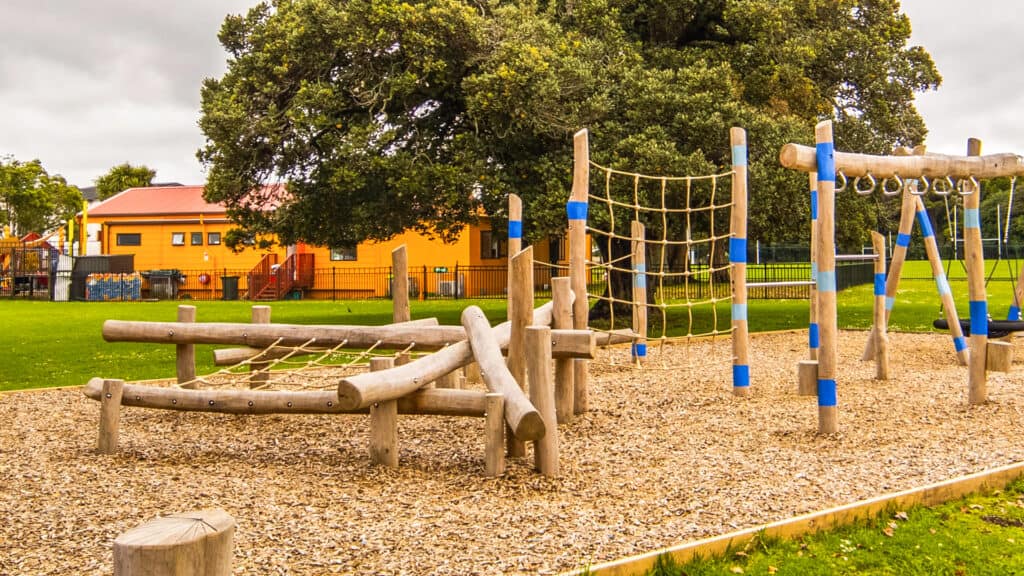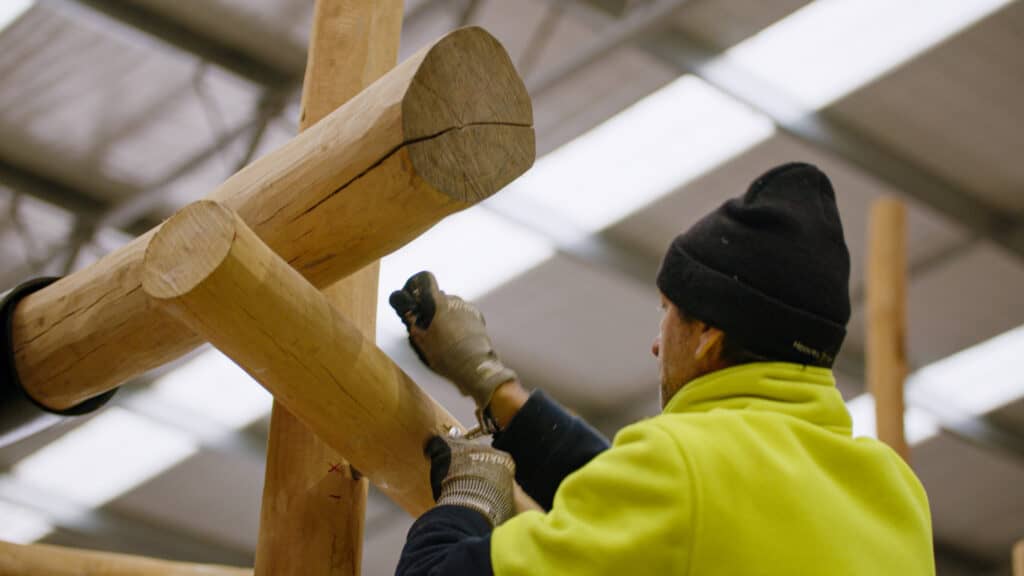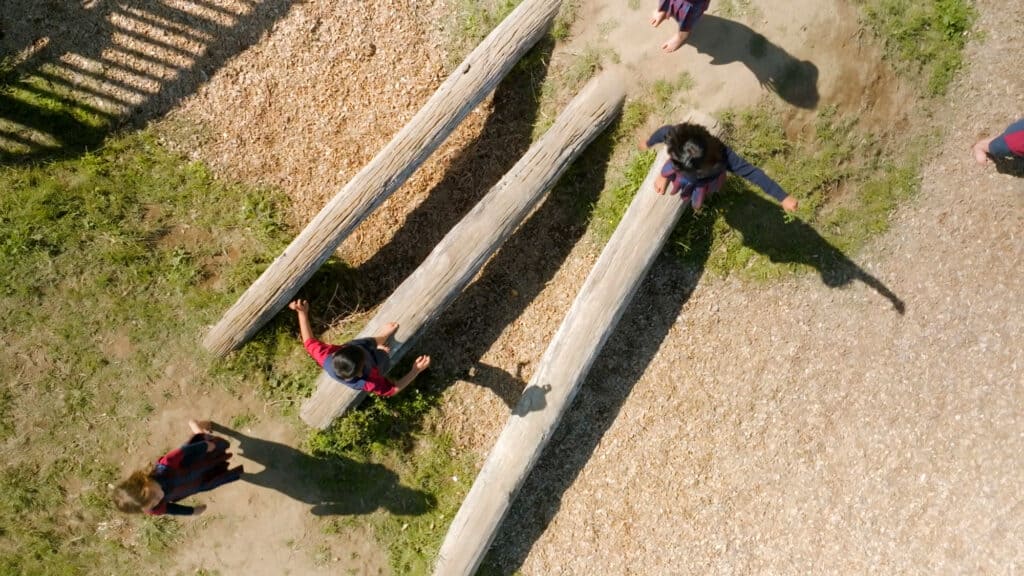You might have noticed that children are more on their screens than actually experiencing the world. Also, with a more urbanised society, the need for nature is returning in playground design. Natural play equipment is gaining popularity in playgrounds worldwide, offering a refreshing alternative to traditional steel structures.
But a question often comes up: “Is natural play equipment safe for playgrounds?” We sat down with KP Holay, the Senior Design Engineer at Creo, to learn more about these types of equipment.
What is Natural play equipment?
Natural play equipment consists of elements from the earth, like tree logs, tree stumps, boulders, plants, and more. It’s about climbing a rock, playing in the leaves, or planting plants.
These natural landscapes provide opportunities for children to explore, run, jump, climb, and more. Studies show children spend even more time playing outdoors in natural environments than in traditional playground environments.

What are the things taken into account when designing with natural resources, such Robinia?
Designing natural playgrounds requires using locally available resources and naturally available timber.
We focus on the flow of play equipment, adding elements for overall development, and using materials like locally available treated pine and Robinia for durability and ease of maintenance.
We also consider the balance of easy to challenging levels, hand-eye coordination, balancing, imagination, upper body strength, and socializing areas.
The whole playground design should focus on how children can be challenged through physical play elements such as boulders and tree stumps that increase strength and balance.
Items such as plants, rocks, and animal feeders in an open, natural play space encourage children to collaborate, improving social skills, problem-solving, empathy, and more as they work together.
Since most natural playgrounds are open, it provides for inclusion for children of all skill levels and abilities to be involved.
What goes into designing Natural Play Equipment?
We consider regional history, culture, and geography. Play spaces are designed to be accessible and inclusive, focusing on overall body and social development.
Risk management is also key, and we ensure that the equipment is not only fun but also safe for everyone, from kids to their friends, parents, and grandparents.

What are the challenges for the users?
Natural logs and rocks may be bigger in size as compared to conventional steel equipment, making them challenging to play initially, and that is the whole point of nature play.
But this challenge often leads to greater engagement and development.
How to make natural play equipment safer?
No playground is safe and can’t be made 100% safe. But children always learn how to be safe on the playground with time. The best part of playgrounds is to overcome/ play on challenging equipment to give a sense of achievement and self-confidence.
How to maintain these types of equipment?
Regular inspection, cleaning to avoid slipperiness, replacing ropes with wear and tear, and applying natural oil to prevent the splitting of timber are essential.
Treated Pine & Robinia may last up to 20 to 25 years if looked after regularly. They may not last as long as steel, but they are greener and give an excellent look to playgrounds.

Safety Considerations in Natural Play Equipment
Risk Management
Designing with “managed risk” in mind fosters exploration without compromising safety. Utilizing rocks of varying heights, for example, can create a safe yet challenging environment.
Regular Inspection and Maintenance
Regular inspection, cleaning, replacing ropes, and applying natural oil to prevent the splitting of timber are essential for maintaining safety.
Inclusive Design
Providing various play experiences for different ages and abilities ensures that the playground is accessible and safe for all children.
Community Engagement
Involving the community in the design process helps ensure the space meets their needs and expectations, including safety considerations.
Conclusion
Natural play equipment offers children a unique and enriching experience, promoting physical, cognitive, and social development. While inherent challenges and risks exist, careful design, regular maintenance, and a focus on inclusive and managed risk can create a safe and engaging environment.
Our conversation with KP sheds light on the intricate design considerations prioritising safety in natural play equipment. As we continue to explore and implement these ideas, we are building playgrounds and nurturing a connection with nature that will last a lifetime, all while maintaining a safe space for children to grow and explore.